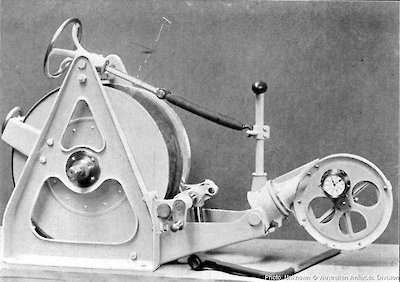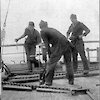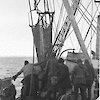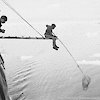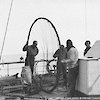Ship of science
Aurora’s new role as a platform for Antarctic science was mapped out from the moment Mawson’s committee agreed to buy the ship in London in 1911. John King Davis, fresh from commanding Shackleton’s Nimrod, was to be in effect the ship’s scientific leader as well as its master, and it was Davis who had the task of getting things ready.
Davis was not a professional scientist, although he was trained in many matters nautical. His hydrographic training gave him confidence in dealing with a major assignment for Aurora — mapping the sea floor and the Antarctic coast, and his fine charts are testament to high personal standards. He took very seriously his added function as a scientific manager.
Under Davis’s supervision in London, the humble Dundee whaler became transformed into a ship of science. He obtained specially-prepared blank working charts. From the British naval hydrographer John Parry he secured deep-sea sounding record books, along with advice on use of Aurora’s two sounding machines.
William Speirs Bruce, the celebrated leader of the 1902–1904 Scotia expedition, lent Davis a deep-water Lucas sounder, able to sound to depths of over 10 kilometres. In return, Bruce won Davis’s unstinting praise:
[Bruce’s] great and unselfish services to Antarctic exploration and to oceanography deserve to be more widely remembered. There is not space to give a proper account of the achievements of this modest and heroic man … [He] unhesitatingly offered to lend our expedition the whole of his deep-sea sounding and trawling gear and spent three days instructing me in the operation of this fine equipment …
Then there was the ship’s netting and dredging gear, to be used to obtain biological specimens from the ocean depths. A steam windlass and deep sea dredging equipment were fitted at the end of Aurora’s first Antarctic voyage, in Sydney in the autumn of 1912. The ship carried a variety of trawls and nets designed for sampling selectively from different parts and depths of the ocean.

